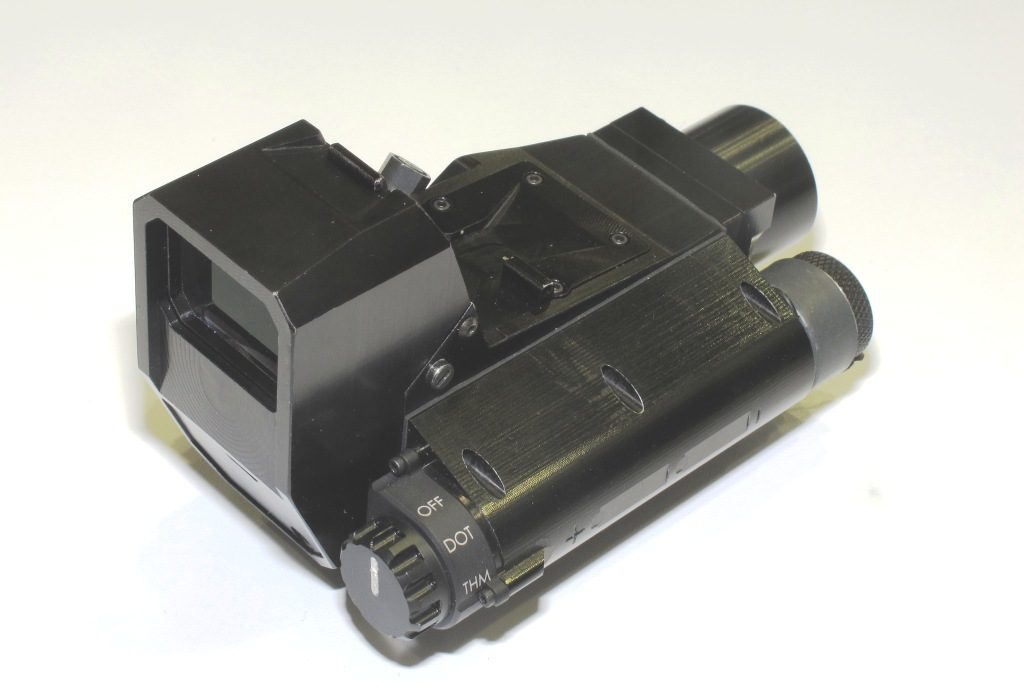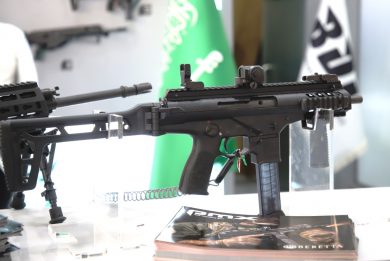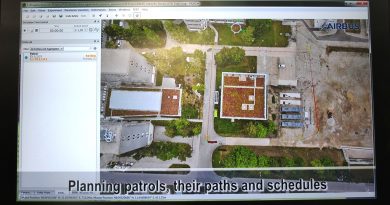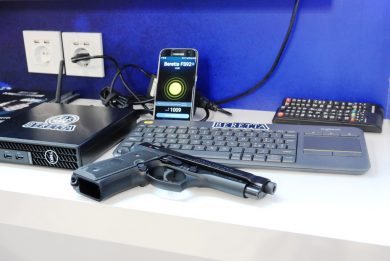
Steiner eOptics CQT sight closes to production
Seen at DSEI last September, the new Close Quarter Thermal (CQT) sight developed by eOptics, part of Beretta, is getting closer to production. “Yesterday we successfully passed one of the harshest MILSPEC tests, the waterproof one,” Keith Enlow, Steiner general manager tells EDR On-Line with one of the pre-production items resting on the table. “We are going to start the Low Rate Initial Production very soon,” Enlow says, adding that part of these first lots will go to SOCOM units to conduct thorough testing in operational conditions. These will last 4-5 months, part of them being carried out by the Naval Surface Warfare Center – Crane Division. Quality is the key word at eSteiner when talking of the CQT, thus the industrialisation process will be carefully monitored. The sight puts together the advantages of a red-dot sight and of a thermal sight, the latter channel being based on one of the most recent products of its kind in the FLIR portfolio, a 320×256 microbolometer with a 12 µm pitch and a refreshment rate of 60 Hz. The field of view is of 16°x12°, the thermal sight working in three different selectable modes, outline, decluter and full thermal. The declutter mode takes away some of the thermal discrimination, to allow objects to be more easily picked out from the background. This is useful in tactical situations with a large number of objects similar in temperature to humans. The window size is 31×22.5 mm; the sight can be used with night vision goggles and can be fitted with a x3 magnifier when shooting at extended range.

A compact system, it is 133 mm long and 77 mm wide, while the height of the centre of the window from the rail is only 53 mm. When operating in thermal mode the two CR123 batteries ensure an autonomy of four hours, while if the red dot mode is used this is increased to 160 hours. The CQT weighs 390 grams including batteries.
The configuration has been frozen and full production should be launched in Q2-Q3, following the end of the operational evaluation and once lessons learned will prove the system full compliance to the customers requirements. Asked on future developments Keith Enlow stated that “we are considering long term improvements,” but obviously did not elaborated on that.
Photos by Paolo Valpolini



